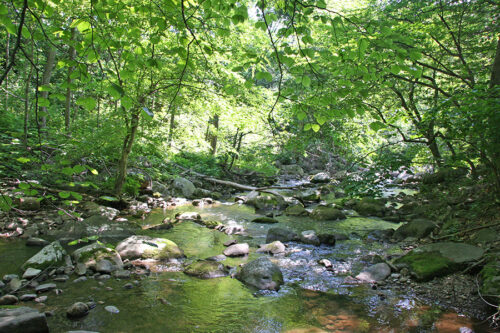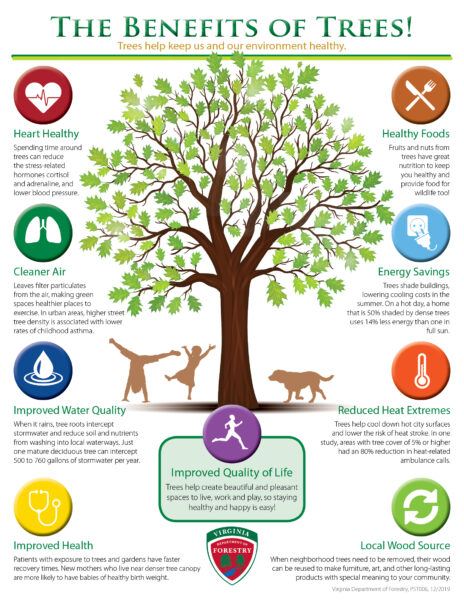
Trees in Forests
Forests are well known for providing a renewable source of wood products. Some products come from the trees themselves, while others, like mushrooms or medicinal herbs, come from the forested environment. In addition to lumber, paper, and a host of other products, forests provide benefits called “ecosystem services”, including:
- filtering air to improve air quality
- preventing soil erosion
- supplying places for outdoor recreation
- providing wildlife and pollinator habitat
- sequestering and storing carbon
- protecting water quality
- offering scenic beauty
Trees in Cities and Towns
Trees in urban areas and yards have value, too. Neighborhoods with lots of trees have lower crime rates, less air pollution, lower energy costs, and higher property values than those without trees. Walking among trees can improve health, and even viewing trees through a window can speed patient recovery times.
Read more about the benefits of trees in communities.
Read more about healthy trees healthy lives.
Trees in Riparian Areas
Trees in riparian, or streamside, zones provide special ecosystem benefits, including:
- filtering runoff to remove pesticides, fertilizer, and other chemicals
- preventing streambank erosion and keeping sediment out of the stream
- shading streams to keep them cool for aquatic organisms
- dropping organic matter that serves as food and microhabitat for aquatic organisms
- absorbing excess water during storm events and releasing it slowly, reducing flood potential
Read more about the benefits of streamside forests.

